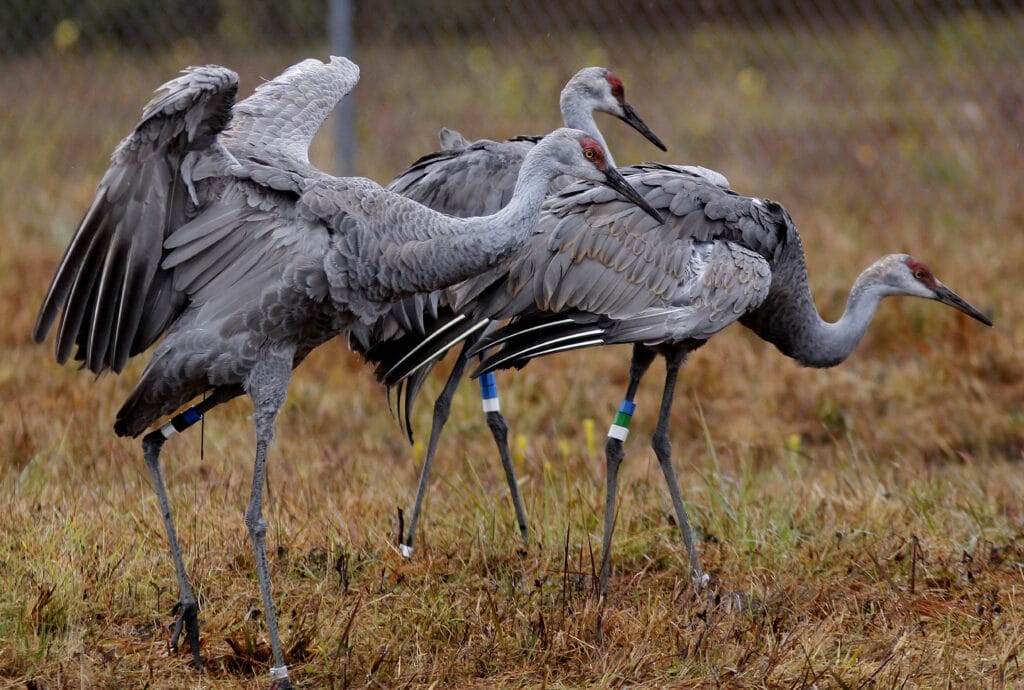The pesticide malathion is no longer considered harmful to protected plants and animals, U.S.. wildlife officials have determined. This is because chemical manufacturers have changed labeling to ensure that it is properly used. The Associated Press has the story:
Malathion ruled OK to use as pesticide due to label changes
BILLINGS, Mont. (AP) — U.S. wildlife officials have reversed their previous finding that a widely used and highly toxic pesticide could jeopardize dozens of plants and animals with extinction, after receiving pledges from chemical manufacturers that they will change product labels for malathion so that it’s used more carefully by consumers.
Federal regulations for malathion have been under review in response to longstanding complaints that the pesticide used to control mosquitoes, grasshoppers and other insects also kills many protected plants and animals. The U.S. Fish and Wildlife Service determined in a draft finding last April that malathion could threaten the continued existence of 78 imperiled species and cause lesser harm to many more.
Wildlife officials reversed their position on the 78 species in a Feb. 28 biological opinion following talks between malathion manufacturers, officials from the wildlife service and the Environmental Protection Agency, according to documents reviewed by The Associated Press in advance of their public release.
Wildlife service officials now say malathion could cause limited harm to hundreds of species, but is unlikely to jeopardize any of them with extinction as long as labels that dictate its use are changed. Their conclusion depends on farmers, gardeners and other consumers abiding by the instructions on where and when to use the pesticide.
But environmentalists who wanted more restrictions imposed expressed doubt that the government’s collaboration with chemical companies would lead to meaningful changes. They also objected to an 18-month timeline for the EPA to approve new malathion application guidelines, saying there’s no reason for further delay.
“This is an enormous punt,” said Brett Hartl with the Center for Biological Diversity. “There’s not a single endangered species that will see anything change on the ground because of this biological opinion for at least 18 months, but probably never.”
The manufacturers agreed to use labels that provide extensive guidelines on when and where malathion should be used to avoid killing wildlife. For example, the labels would say not to spray malathion to kill mosquitoes during the middle of the day, when bees and some other insects are more active and thus more likely to be inadvertently killed.
“The Service worked with EPA, the malathion registrants and USDA to develop general and species-specific conservation measures that significantly reduce many of the effects of malathion use on listed species and their critical habitats,” said Gary Frazer, the wildlife service’s assistant director for ecological services.
The manufacturers were largely represented by FMC Corp., a Philadelphia-based agricultural chemical company, according to the wildlife service.
FMC spokesman Lars Weborg said the proposed labels and other updates to guidelines for using malathion would be protective of endangered species and their habitats. Weborg said they were crafted in consultation with government officials “and were developed using a standard procedure common to any industry.”
The species that were found in jeopardy last year included birds such as the Mississippi sandhill crane and various fish, insects, snails and other animals and plants.
Every year almost a million pounds of malathion are used on crops in California, Florida, Washington, Oregon, Ohio and other states, according to the U.S. Geological Survey. Close to 2 million pounds is used every year in home gardens, for mosquito control and other uses, according to data from a 2018 government survey. The amount used on farmland has fallen by about two-thirds since its 1998 peak, according to the data.
Malathion is considered highly toxic to insects, fish and crustaceans. International health officials have said the chemical is probably carcinogenic to humans.
The review of malathion’s impacts on wildlife came under a legal agreement with the Center for Biological Diversity. The environmental group first sued the EPA two decades ago, for failing to consult with other federal agencies about the risks of pesticides on wildlife and plants, and filed more lawsuits leading up to its 2013 settlement with the Fish and Wildlife Service.
In 2017, the AP reported a push by Dow Chemical for the Trump administration to ignore government studies on a family of pesticides that includes malathion. The lobbying came after initial findings from the EPA that the pesticides had negative effects on more than 1,000 endangered and threatened species.
The Trump administration later that year sought a two-year delay in its review of malathion and other pesticides.
A separate review of malathion’s affects is pending from the National Marine Fisheries Service. The agency said in a Feb. 25 draft analysis that malathion could jeopardize 37 species. The draft did not include consideration of the label changes planned by manufacturers, which fisheries service officials said they would incorporate into their final opinion.
By MATTHEW BROWN







